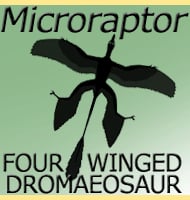In Depth
Hypsocormus was in essence a fish built for speed. The tail lobes were large and in approximate proportion to one another which meant that the tail was capable of providing strong forward thrusts for very little effort. Even more key to fast swimming however were the pectoral fins which are in the simplest terms of function are hydroplanes. Because propulsion is provided to the rear of the body, the nose of the animal naturally pitches down. The more thrust provided by the tail, the greater the effect, but proportionately larger pectoral fins mean that the pitching effect is counteracted so that the fish stays on a level course. In addition to the tails and pectoral fins, the body was deep with a well-developed anal fin, further adaptations for level swimming. All of these features together combine to portray a fish that could not only swim fast but sustain that speed for long periods, perhaps denoting a specialisation to hunting fairly fast swimming prey. The scales of Hypsocormus were also fairly small to allow for an increase in manoeuvrability, specifically a decrease in turning space. A possible scenario would be a Hypsocormus or several of them chasing down a shoal of fish, swimming alongside of them and then quickly turning into the shoal to snatch a fish.
Further Reading
- �ber die Wirbeltierfunde in der oberen Trias von Halberstadt [On the vertebrate finds in the Upper Triassic of Halberstadt] - O. Jaekel - 1913. - Les Poissons et les Reptiles du Jurassique sup�rieur de Fumel (Lot-et-Garonne) [The fishes and reptiles from the Upper Jurassic of Fumel (Lot-et-Garonne)] - H. -E. Sauvage - 1900. - The Structure of Certain Jurassic Holostean Fishes with Special Reference to Their Neurocrania - D. H. Rayner - 1948.











